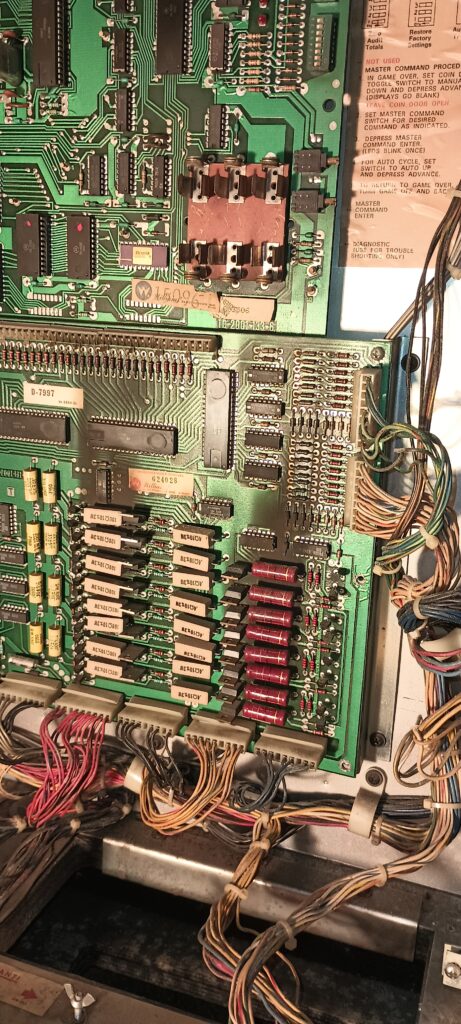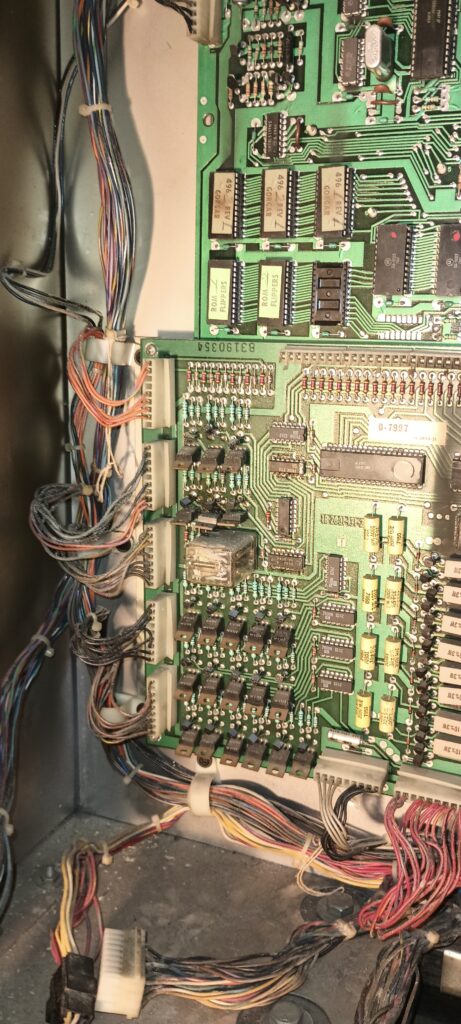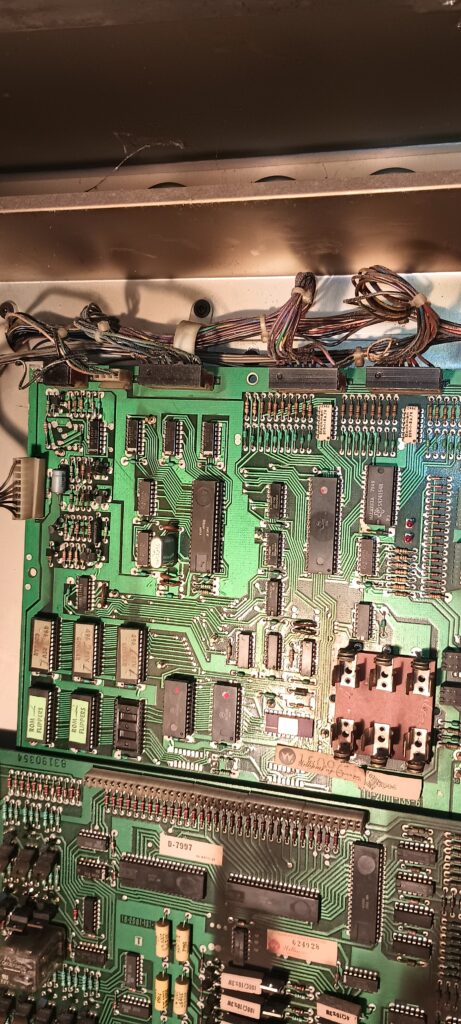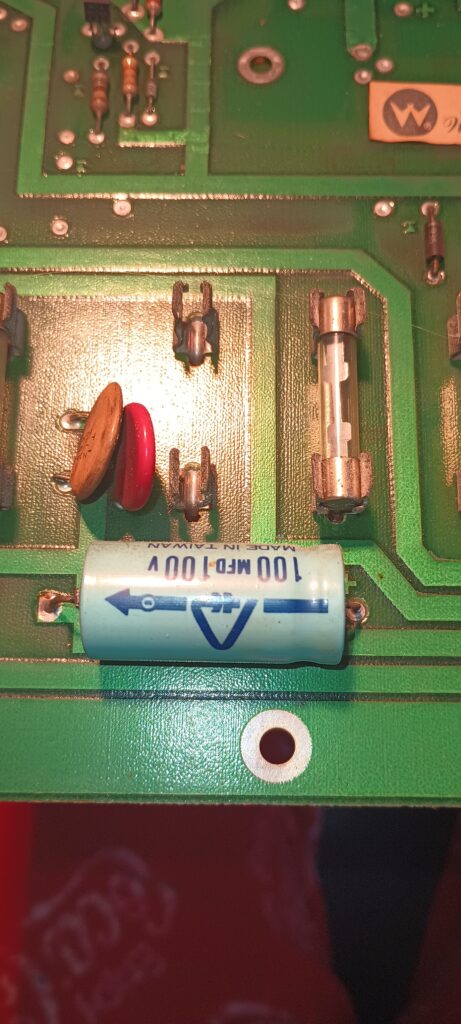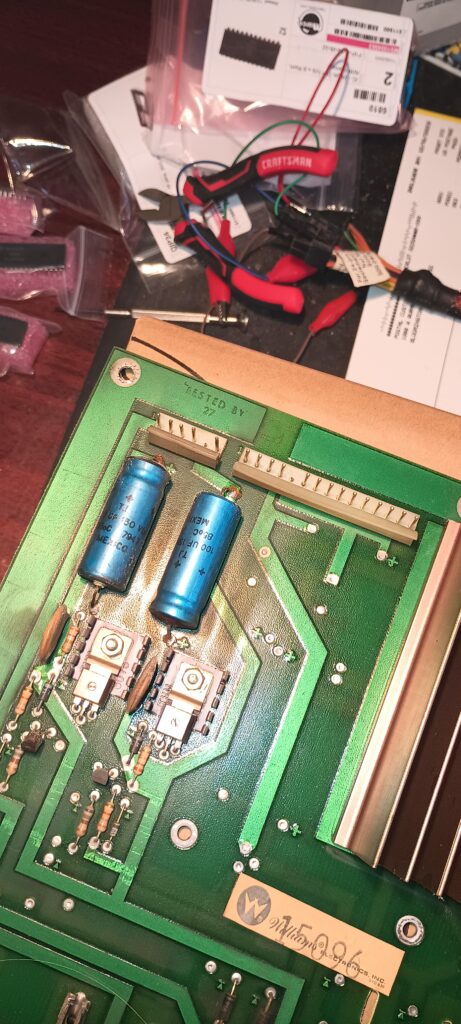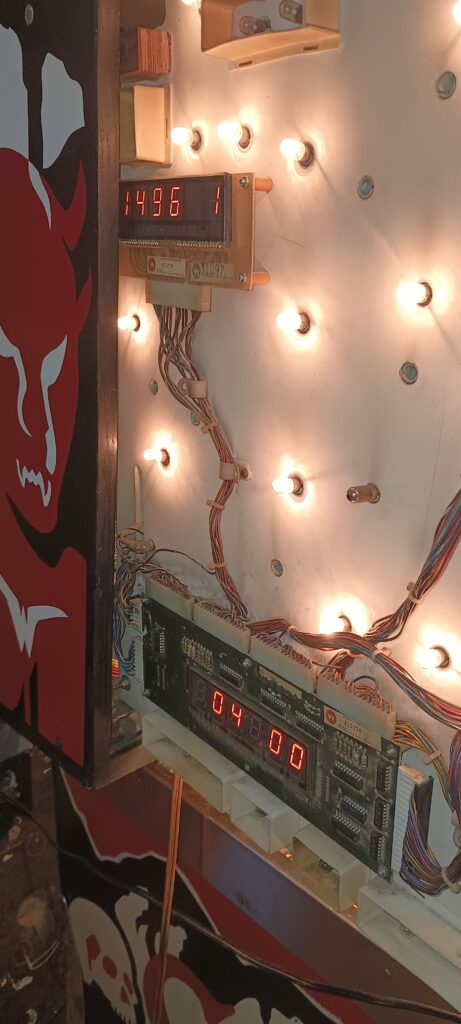Welcome to the Gorgar Pinball Restoration Project Episode 05. Its been a little over a month since I last posted and only a couple of months since we acquired this table. It is coming along very nicely and I’m excited to wrap this one up.
Since the last review, we’ve replaced a light socket, cleaned out most of the others with a wire brush. All of the red arrows had strangely raised slightly out of the playfield, so I used the heatgun to soften the glue and push them flush with the playfield. This was a whole lot better than what we did with the Harlem Globetrotter inserts.
All the rubber rights have been replaced. And the flippers have been mostly rebuilt. What I mean by that is I replaced both plungers, as well as the nylon sleeves. The left flipper needed a new crank and end of stroke switch. It looks like it had been hacked as the EOS switch was shorter than it should be and so the crank had some additional material on it so it would still make contact. I believe this added to the lagginess of the flipper. Is that a word? We replaced all the other nylon sleeves in the solenoids for the pop bumpers and kickers.
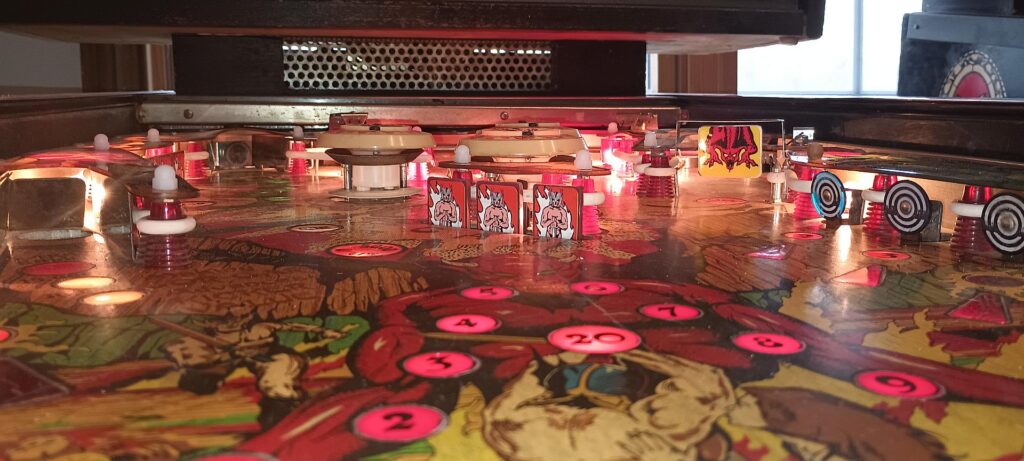
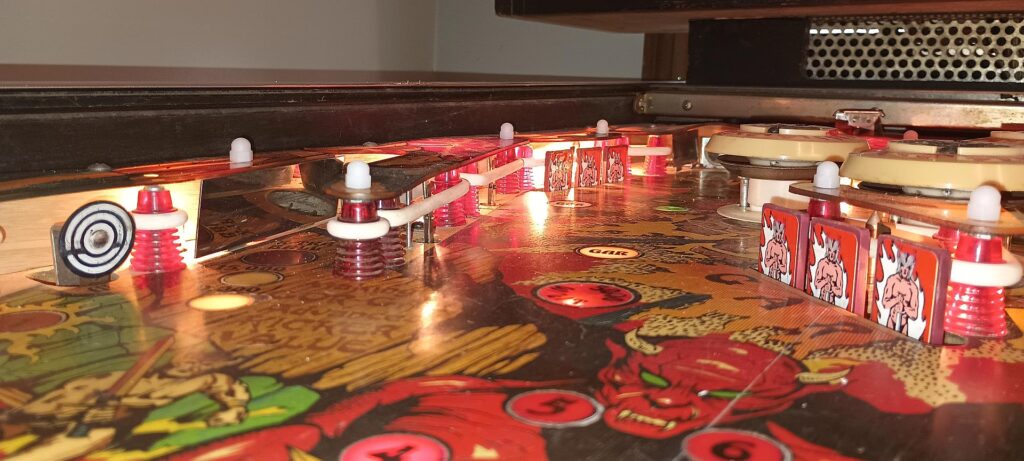
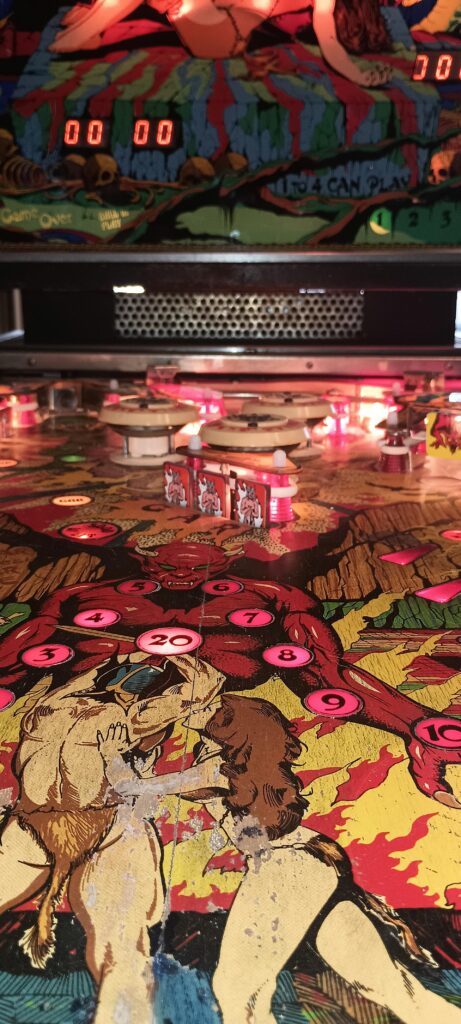
Both of the drop target assemblies were removed, cleaned, adjusted and new decals placed on the drop targets. Playfield switches all got a good look at with many of them getting adjusted so that ball contact with the rubber now triggers them. Lastly, I took all of the plastic off the playfield and flattened it and polished it. Most of them were terribly warped. I used a technic I learned from one of the Pinball Repair blogs and used a heat gun and a couple of panes of glass. As the plastic heats up it softens ever so slightly. I then sandwiched the plastic between the glass and sat a stack of books on the glass and allowed the plastic to cool. This worked wonders with the plastic.
I’m actually enjoying playing this table more than I thought I would. The rule set is deep enough to be challenging, but not so vast that there is just no hope of achieving any of them. My last goal is to touch up the paint in a couple of places in the middle of the playfield and hit it with some spray clear. I don’t have the resources to do a full playfield restore, but if I just touch up a few places, I think it will keep it nice enough for what the machine is currently worth.
Expect a final video in a few weeks showing off the final product.
